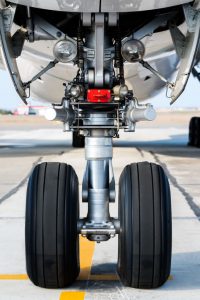CRM is Essential to the Safety of Flights
A Gulfstream GIV accident that occurred during takeoff at Fort Lauderdale Executive Airport in 2021 is being attributed to a nose pin error and a lack of crew resource management (CRM). The crew reported a “violent shimmy” at around 100 knots, causing the gear to detach from the aircraft when they aborted the takeoff. Substantial damage was caused as the plane veered off the runway and hit multiple approach lights, but thankfully no one was hurt.
Investigation revealed that neither the PIC nor the SIC ensured that the nose gear pin was correctly installed before takeoff. Furthermore, the ground crew supervisor failed to alert the crew of a pin anomaly following aircraft repositioning. The pin was not properly positioned, despite appearing so at first glance. The incorrect positioning caused the pin to separate during takeoff, resulting in the shimmy and ultimately the accident.
This seems like a classic CRM mismanagement issue and maybe the whole incident could have been avoided if the people involved had just talked to each other.
CRM and Its Benefits
Crew resource management has a positive impact of flight safety and provides several advantages, including:
- Enhanced situational awareness: CRM training provides pilots with the tools to identify potential hazards and avoid them before they become a problem.
- Improved communication: CRM techniques improve communication between pilots and crew members, allowing for effective information sharing and more efficient decision-making.
- Better leadership skills: CRM training emphasizes leadership skills, allowing pilots to take charge in critical situations and lead their team effectively.
- Improved decision-making skills: CRM training provides pilots with a framework for making decisions quickly and effectively in high-pressure situations.
- Enhanced team coordination: CRM training teaches pilots the importance of teamwork and collaboration, allowing for better coordination between crew members and safer flights.
Real-world examples of how improved CRM has prevented accidents and contributed to safe and successful flights include instances where pilots were able to identify and solve potential safety hazards before they became a problem, thanks to enhanced situational awareness and effective communication. In other cases, CRM allowed pilots to make quick, informed decisions that prevented accidents from occurring.
By enhancing pilots’ situational awareness, communication, leadership, decision-making skills, and team coordination, CRM enables pilots to deliver an exceptional product to their passengers – a safe and secure flight. As the aviation industry continues to evolve, CRM remains a critical component of flight safety, ensuring that pilots and crew members are equipped with the knowledge and tools they need to navigate the challenges of air travel and maintain the highest standards of safety and professionalism.
RELATED READING
RELATED CTS TRAINING










